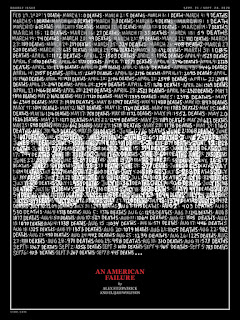Our team was in Community this week (and we captured an image of our Community Walkabout) as North Laguna Beach had to deal with a Fire and evacuations were ordered. As such, our team pulled some latest on Shelter as our Esparanza Initiative evolves--this is as America is starting to open up as COVID recedes (and we captured a recent edition of the John Hopkins Snapshot for reference): FEMA Updated Shelter Locator Texting Feature
Having the right information at the right time is often key to surviving a disaster. FEMA’s texting feature allows the public to access shelter information when they need it most. Users can text "shelter" and their ZIP code to 43362 to get a list of nearby shelter locations. This effort is made possible through collaboration with the American Red Cross.
“Disasters frequently disrupt communications systems which can leave survivors feeling overwhelmed and helpless when they are trying to locate shelters,” said FEMA Administrator Deanne Criswell. “Since texting capabilities are often unaffected during disasters, our updated Text to Shelter option is an easy and accessible way survivors can locate nearby shelters with a tap of a button. This feature will help keep our communities safe.”
FEMA’s old text feature only showed shelters within the requested ZIP code. This new feature uses Geographic Information System (GIS) capabilities to give users shelter addresses within 200 miles of their ZIP code. The texting feature is available across all 50 states and U.S. territories. Standard texting rates with the user’s carrier may apply, but there is no additional fee to use this service. In phones with a standard map feature, users will be able to click on the shelter address inside the text message and view directions. The text can be easily shared with friends and family so they know where the user is going or where they themselves can take shelter.
Shelters identified through the text feature are pulled from data managed by the American Red Cross. FEMA does not run shelters. Remember that in a disaster situation it is always important to follow the immediate instructions of state and local officials, as they may be able to point survivors to additional shelters and resources not included in the text feature.
Disasters can strike anywhere, anytime. Save this number, 43362, in your phone today so you’ll be able to find a safe space to shelter during a disaster. Information on different types of shelters and sheltering can be found at Shelter | Ready.gov. Additional ways to find shelter can be found at FEMA.gov/shelter or redcross.org/shelter.
COVID-19
Clinical Practice
Final Analysis of Efficacy and Safety of Single-Dose Ad26.COV2.S (New England Journal of Medicine) The Ad26.COV2.S vaccine was highly effective against severe–critical coronavirus disease 2019 (Covid-19), hospitalization, and death in the primary phase 3 efficacy analysis. We conducted the final analysis in the double-blind phase of our multinational, randomized, placebo-controlled trial, in which adults were assigned in a 1:1 ratio to receive single-dose Ad26.COV2.S (5×1010 viral particles) or placebo. The primary end points were vaccine efficacy against moderate to severe–critical Covid-19 with onset at least 14 days after administration and at least 28 days after administration in the per-protocol population. A single dose of Ad26.COV2.S provided 52.9% protection against moderate to severe–critical Covid-19. Protection varied according to variant; higher protection was observed against severe Covid-19, medical intervention, and death than against other end points and lasted for 6 months or longer.
Public & Global Health
What it’s Like Inside the Beijing Olympics (Washington Post) In an effort to prevent the spread of the coronavirus, China has created a hard bubble at the Beijing Olympics that is known as the “closed loop.” Everyone involved in these Olympics, including athletes, journalists, volunteers and other workers, are confined to a group of hotels and event venues that make up the Winter Games. The system has allowed those coming into China to avoid the country’s 21-day quarantine.
As Russia commands the world’s attention with a military buildup around Ukraine, it faces a stubborn domestic challenge: the coronavirus. On Friday, the country reported a daily record of 200,000 new coronavirus cases, as the highly transmissible Omicron variant sweeps across the remote parts of the vast country. Though deaths in Russia are off their November peak, the surge has served as a reminder of the vulnerability of Russia’s vaccine-skeptical population. Omicron, which has also driven case counts up to extraordinary levels in many other European countries, began spreading across Russia in the middle of January, quickly becoming dominant in Moscow and other urban centers. The country recorded more than 170,000 cases over the past week, or 122 cases per 100,000 people, according to the Center for Systems Science and Engineering at Johns Hopkins University.
CDC Readies for COVID-19 Vaccine in Youngest Kids (CIDRAP) The Washington Post is reporting that Centers for Disease Control and Prevention (CDC) officials are telling vaccine providers to prepare for a Feb 21 rollout of the Pfizer-BioNTech COVID-19 vaccine for children ages 6 months to 4 years, just 1 week after advisers from the Food and Drug Administration (FDA) are set to vote on an emergency authorization of the vaccine.
Biological Agents & Infectious Diseases
Just 14 Cases: Guinea Worm Disease Nears Eradication (Nature) While the COVID-19 pandemic continues to rage around the world, another disease could be on its way out. Only 14 cases of infection with Guinea worm — a parasite that causes painful skin lesions — were reported in humans in 2021. This is the lowest tally ever for an infection that, as recently as the 1980s, was found in more than 20 countries and infected 3.5 million people a year (see 'On the way out') — however, a remaining reservoir for the parasite in animals means eradication could be a while off, if indeed it is possible, say some scientists.
Domestic Preparedness & Response
New York Could Fire As Many As 3,000 Unvaccinated City Workers On Friday (New York Times) New York City on Friday is expected to fire as many as 3,000 municipal workers who have refused to get coronavirus vaccines. They make up a small fraction of the city’s employees — less than 1 percent. But they would probably represent the most drastic example of a work force reduction tied to a coronavirus vaccine mandate. Mayor Eric Adams has said that he would prefer not to fire the unvaccinated, but by remaining so, they were “quitting.” They are not going quietly. Hundreds marched across the Brooklyn Bridge on Monday, chanting that the city should end the mandate and carrying signs that said “Unvaccinated Lives Matter” and “Fire Fauci.” Mr. Adams has reaffirmed the city’s ultimatum: They will be the ones fired unless they get at least one shot.
APHIS Announces Final Strategic Framework for Enhancing Surveillance for SARS-CoV-2 and other Emerging Diseases Under the American Rescue Plan (APHIS) Today, the U.S. Department of Agriculture’s (USDA) Animal and Plant Health Inspection Service (APHIS) is pleased to announce the final Strategic Framework (PDF, 362 KB) outlining how the Agency will advance surveillance of SARS-CoV-2 and other emerging zoonotic diseases as directed by President Biden’s American Rescue Plan (ARP). Early detection and response to pathogens with zoonotic potential while still in animals is essential in limiting or preventing human outbreaks. Additionally, the Agency has launched a new website to help stakeholders and the public stay up to date on the Agency’s broad array of ongoing One Health initiatives as well as SARS-CoV-2 surveillance projects and other activities funded by the $300 million provided by the American Rescue Plan Act.
Science & Technology
Public Health Vaccines Announces the Initiation of the First Clinical Trial Evaluating its Nipah Virus Vaccine. (Public Health Vaccines) Public Health Vaccines, LLC (PHV), a biotechnology company out of Cambridge, MA developing novel products against emerging infectious diseases, today announced the start of its Phase 1 clinical trial to evaluate the safety and immunogenicity of the company’s single-dose vaccine (PHV02) against Nipah virus—a batborne virus that can spread to both humans and livestock causing serious illness, including encephalitis, pneumonia and death.



Comments
Post a Comment